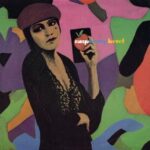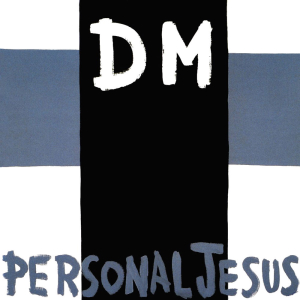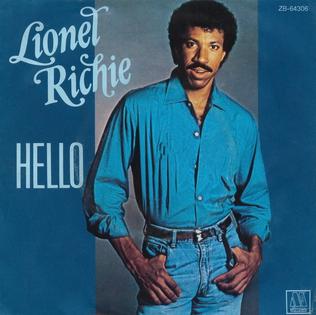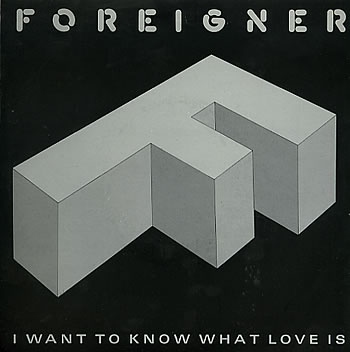 When music fans think of the most colorful, effortlessly cool songs of the 1980s, “Raspberry Beret” by Prince immediately stands out like a bright splash of purple on an otherwise grey canvas. Released in 1985 as the lead single from Around the World in a Day, the track arrived on the heels of Prince’s career-defining Purple Rain era—a period when he could have played it safe, doubled down on arena rock anthems, and coasted on fame. Instead, he gave the world a whimsical psychedelic pop song about a boy, a girl, and a thrift-store hat. The result was one of the most irresistible and enduring singles of his career.
When music fans think of the most colorful, effortlessly cool songs of the 1980s, “Raspberry Beret” by Prince immediately stands out like a bright splash of purple on an otherwise grey canvas. Released in 1985 as the lead single from Around the World in a Day, the track arrived on the heels of Prince’s career-defining Purple Rain era—a period when he could have played it safe, doubled down on arena rock anthems, and coasted on fame. Instead, he gave the world a whimsical psychedelic pop song about a boy, a girl, and a thrift-store hat. The result was one of the most irresistible and enduring singles of his career.
“Raspberry Beret” is more than just a catchy tune; it’s a window into Prince’s restless creativity. At a time when fans expected sequels to “When Doves Cry” or “Let’s Go Crazy,” he pivoted toward 1960s pop influences, vivid storytelling, and a sound that was both retro and ahead of its time. To fully appreciate the brilliance of the song, it’s worth examining its backstory, musical architecture, lyrical layers, and the way it captured Prince’s singular vision of pop music.
Setting the Stage: Prince After Purple Rain
In 1984, Prince was at the absolute peak of his powers. Purple Rain had transformed him from a rising star into a global icon. The album sold over 25 million copies worldwide, the film became a cultural phenomenon, and hits like “When Doves Cry,” “Let’s Go Crazy,” and the title track dominated radio and MTV. The logical move would have been to release another blockbuster with the same sound—a safe bet that would keep arenas filled and record executives happy.
But Prince was never interested in repeating himself. He recorded Around the World in a Day before the Purple Rain tour even ended, and he intentionally avoided the guitar-heavy rock-funk hybrid that had made him a superstar. Instead, he leaned into a kaleidoscopic palette of psychedelic pop, Middle Eastern instrumentation, and whimsical melodies. “Raspberry Beret” was the sparkling centerpiece of this new direction—a perfect blend of his pop instincts and his appetite for sonic adventure.
From the Vault to the World
Although it became a signature hit in 1985, “Raspberry Beret” actually originated earlier. Prince began working on the song during sessions for 1999 in 1982, but it didn’t make the cut for that album. The early demo had a raw, stripped-down feel, but when Prince revisited it for Around the World in a Day, he completely reimagined the track.
The final version featured his backing band The Revolution, whose contributions were critical to the song’s lush sound. Lisa Coleman’s harmonies, Wendy Melvoin’s guitar textures, and the string arrangements helped give the track a warm, organic vibe that set it apart from the colder, synth-driven hits of the early 80s. Prince, as always, served as producer, arranger, and multi-instrumentalist, ensuring every detail reflected his vision.
A Sonic Bouquet
Musically, “Raspberry Beret” is a masterclass in pop craftsmanship. At first listen, it sounds deceptively simple—a breezy, mid-tempo tune with a lilting melody and a steady, skipping beat. But a closer listen reveals layers of intricate production.
The opening string flourish sets a playful tone, immediately evoking the psychedelic pop of the late 1960s. The rhythm is anchored by a crisp, slightly swung drum pattern, while acoustic guitar and subtle synth textures create a warm bed for the vocals. The use of real strings, played with a jaunty elegance, adds a cinematic touch. Prince’s vocal performance is equally nuanced; he shifts between a conversational storytelling tone in the verses and a joyous, almost childlike exuberance in the chorus.
The song’s arrangement is a lesson in restraint. Each instrument serves the song without crowding the mix. The strings enter and exit with perfect timing, the harmonies bloom just enough to elevate the melody, and the percussion provides a gentle but insistent groove. The result is a track that feels both airy and meticulously constructed—a hallmark of Prince’s genius.
The Story in the Song
At its heart, “Raspberry Beret” is a story of young love and innocent rebellion. The narrator is a young man working a mundane job in what sounds like a small-town store. He’s bored, restless, and perhaps a little shy—until a mysterious girl wearing a raspberry-colored beret walks through the door. She’s confident, stylish, and free-spirited, exactly the kind of person who can shake him out of his routine.
The lyrics read like a miniature coming-of-age film. The narrator describes their flirtation, the impulsive decision to skip work, and their romantic encounter “out in the barn of the pastures.” There’s an undercurrent of nostalgia and sweetness, as if the singer is looking back on a formative experience with a smile.
Prince’s choice of the raspberry beret as a central image is inspired. The hat isn’t expensive or glamorous—it’s second-hand, perhaps even a little quirky. But it becomes a symbol of individuality and romantic allure. The girl’s willingness to wear something unique reflects the spirit of freedom and self-expression that Prince championed throughout his career.
Psychedelic Pop Meets Minneapolis Funk
While “Raspberry Beret” draws heavily from the psychedelic pop of the 1960s, it’s unmistakably a Prince creation. The subtle funkiness of the rhythm section, the precision of the production, and the playful eroticism of the lyrics all bear his fingerprints. This fusion of influences is what makes the song timeless. It nods to the past without feeling like mere nostalgia, and it sounds fresh even decades after its release.
The Revolution’s involvement adds another layer of richness. Lisa Coleman and Wendy Melvoin’s harmonies give the song a communal feel, contrasting with the solitary perspective of the narrator. The strings, arranged by Clare Fischer, lend a dreamlike quality that enhances the song’s romantic atmosphere. Every element works in harmony to create a track that feels effortless, even though it’s the product of meticulous craftsmanship.
Charting a New Course
When “Raspberry Beret” was released as a single in May 1985, it quickly became a hit, peaking at No. 2 on the Billboard Hot 100. It was held off the top spot by Duran Duran’s “A View to a Kill,” but its success was remarkable given how different it was from Prince’s previous singles. Fans expecting another rock anthem were instead treated to a breezy pop song that sounded more like The Beatles or The Byrds than the Minneapolis funk that had defined his earlier hits.
The song’s success proved that Prince could defy expectations and still dominate the charts. It also signaled that he was entering a new creative phase, one where he would prioritize artistic exploration over commercial formulas. Around the World in a Day as a whole didn’t match the blockbuster sales of Purple Rain, but it cemented Prince’s reputation as an innovator willing to take risks.
The Visual World of Raspberry Beret
Prince understood the power of visuals, and the music video for “Raspberry Beret” was a perfect complement to the song. Directed by Prince and produced with the same vibrant palette as the album’s psychedelic artwork, the video features the band performing against colorful, swirling backdrops. Prince, dressed in a bright blue suit with a cloud-patterned guitar, exudes playful charisma, while The Revolution provides a sense of communal joy.
The video’s use of vivid colors and surreal imagery reinforces the song’s dreamy, whimsical vibe. At a time when MTV was a dominant force in shaping pop culture, the video helped ensure that “Raspberry Beret” would become a defining visual moment of the mid-80s.
Cultural Impact and Legacy
Nearly four decades after its release, “Raspberry Beret” remains one of Prince’s most beloved songs. It’s a staple of 80s playlists, a guaranteed crowd-pleaser at parties, and a frequent choice for cover bands. Its influence can be heard in the work of artists who blend retro pop with modern production, from Beck to Bruno Mars.
The song also occupies a special place in Prince’s live performances. He often included it in his setlists, sometimes stretching it into extended jams that highlighted The Revolution’s chemistry. Fans cherished these performances, which captured the song’s spirit of spontaneous joy.
Beyond its musical impact, “Raspberry Beret” embodies key aspects of Prince’s philosophy. It celebrates individuality, romantic freedom, and the beauty of everyday moments. The girl in the second-hand hat isn’t a supermodel or a movie star; she’s a unique, self-assured person who inspires the narrator to embrace life. That message of empowerment and authenticity continues to resonate.
Why It Still Matters
Part of what makes “Raspberry Beret” timeless is its universality. Everyone can relate to the thrill of an unexpected crush, the excitement of breaking routine, and the memory of a seemingly small moment that lingers for years. Prince captures these feelings with a warmth and wit that never feels forced.
The song also stands as a testament to Prince’s fearless artistry. In an era dominated by synth-pop and arena rock, he created a psychedelic pop song with strings, acoustic guitars, and a story about skipping work. And he made it a hit. That combination of risk-taking and accessibility is what separates great artists from mere hitmakers.
A Raspberry-Colored Legacy
In the grand tapestry of Prince’s career, “Raspberry Beret” occupies a unique place. It’s not as overtly sexual as “Kiss,” not as politically charged as “Sign o’ the Times,” and not as epic as “Purple Rain.” But it captures something equally important: the joy of discovery, the magic of a fleeting connection, and the thrill of embracing your own quirks.
For longtime fans, the song is a reminder of Prince’s ability to surprise and delight. For new listeners, it’s an inviting gateway into his vast catalog. Whether you’re hearing it for the first time or the thousandth, “Raspberry Beret” still feels like a breath of fresh air—a bright, playful masterpiece that invites you to dance, smile, and maybe fall in love with someone wearing a second-hand hat.
Final Thoughts
“Raspberry Beret by Prince” isn’t just a great pop song; it’s a perfect encapsulation of what made Prince a singular force in music. It combines sharp storytelling with adventurous production, pays homage to the past while sounding timeless, and delivers a message of individuality and joy that remains as relevant as ever. Nearly 40 years after its release, it still sounds like nothing else on the radio—a reminder that true artistry never goes out of style.
Prince may have left this world too soon, but “Raspberry Beret” continues to bloom in the hearts of listeners everywhere. It’s a raspberry-colored spark of genius, forever fresh, forever funky, and forever Prince.


